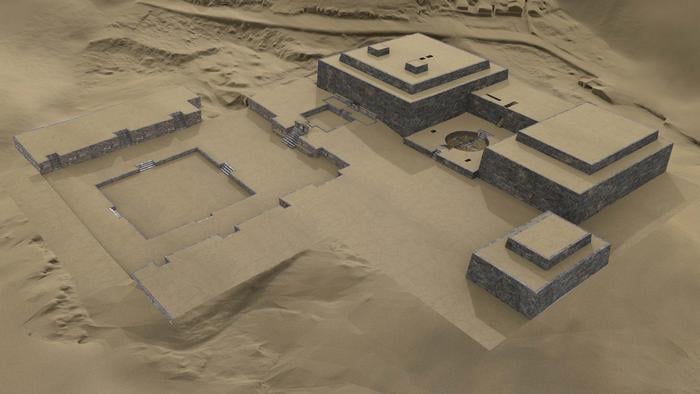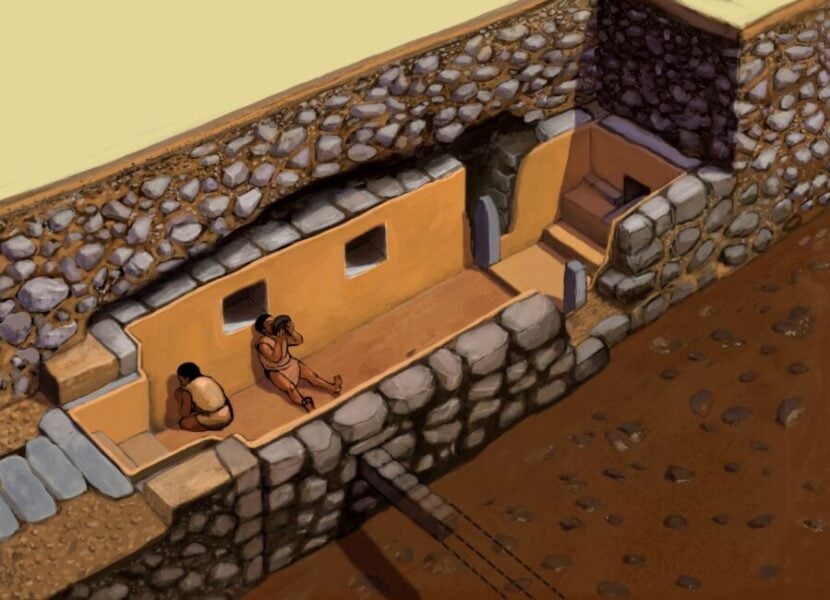High in the Peruvian Andes, at an elevation of 10,000 feet, archaeologists have uncovered compelling evidence that ancient leaders used hallucinogenic substances not just for spiritual exploration, but as sophisticated tools of social control.
A team of researchers from the University of Florida, Stanford University, and several South American institutions has discovered the earliest-known direct evidence of psychoactive plant use in the Peruvian Andes, dating back approximately 3,000 years. Their findings, published this week in the Proceedings of the National Academy of Sciences, shine new light on how the Chavín society established and maintained hierarchical power structures long before the rise of the Inca empire.
The research team discovered ancient snuff tubes carved from hollow bones within private chambers of monumental stone structures at Chavín de Huántar, a prehistoric ceremonial center. Chemical and microscopic analyses revealed these implements contained residue of two powerful substances: nicotine from wild tobacco relatives and vilca bean residue, a hallucinogen related to DMT.
“Taking psychoactives was not just about seeing visions. It was part of a tightly controlled ritual, likely reserved for a select few, reinforcing the social hierarchy,” said Daniel Contreras, Ph.D., an anthropological archaeologist at UF and co-author of the study.
What makes these discoveries particularly significant is the exclusive nature of these rituals. Unlike many ancient cultures where hallucinogenic use was communal, the Chavín ceremonies appear deliberately restricted to small groups within private chambers, creating what researchers describe as “an air of mystique and control.”

The setting itself was engineered to intensify these experiences. The snuff tubes were found in chambers that could accommodate only a handful of participants at a time, nestled within massive stone structures that dominated the landscape. For those permitted to participate, the experience was likely profound and possibly terrifying—exactly as intended by those orchestrating the ceremonies.
“The supernatural world isn’t necessarily friendly, but it’s powerful,” Contreras explained. “These rituals, often enhanced by psychoactives, were compelling, transformative experiences that reinforced belief systems and social structures.”
Building Power Through Belief
Contreras has studied the Chavín site for nearly thirty years as part of a team led by John Rick, Ph.D., professor emeritus at Stanford University. Their research suggests these psychoactive ceremonies played a crucial role in establishing early class structures in Andean society.
The Chavín leaders appear to have used these controlled supernatural experiences to convince their communities that their authority was connected to mystical powers and part of a natural order. This approach offered an alternative to forced labor—instead, people willingly participated in building monumental structures because they believed in their importance.
“One of the ways that inequality was justified or naturalized was through ideology — through the creation of impressive ceremonial experiences that made people believe this whole project was a good idea,” Contreras said.
The research indicates these rituals extended beyond just the use of psychedelics. Archaeologists have also found trumpets crafted from conch shells and chambers apparently designed to enhance musical performances, creating multi-sensory experiences that would have been overwhelming to participants.
A Century-Old Mystery
The findings help resolve questions that have puzzled archaeologists since Chavín de Huántar was first excavated over a hundred years ago. The site has long been recognized as a transitional point between earlier, more egalitarian societies and the mountain-spanning empires ruled by powerful elites that emerged later.
This discovery of controlled access to mystical experiences helps explain this significant social transition. The research demonstrates that even in their early stages, complex societies incorporated psychoactive substances into ritual activities to reinforce power structures.
According to the study, the evidence represents “direct identification of contents of psychoactive paraphernalia from pre-Hispanic Peru” and sheds new light on “the content and function of ritual at Chavín de Huántar and other early monumental centers.”
These insights were only made possible through decades of careful excavation combined with modern analytical methods, including advanced microbotanical and chemical analyses that could detect residues preserved for thousands of years.
“It’s exciting that ongoing excavations can be combined with cutting-edge archaeological science techniques to get us closer to understanding what it was like to live at this site,” Contreras noted.
The Chavín society, sometimes called the Chavín Phenomenon, spread common art, architecture, and materials throughout modern-day Peru around 2,000 years before the Inca empire. Through agricultural innovations, craft production, and trade, they shaped a growing social order and laid foundations for hierarchical society among the high Andean peaks.
But as this new research demonstrates, their most enduring innovation may have been mastering the powerful connection between altered consciousness and social control—a relationship that wou
If our reporting has informed or inspired you, please consider making a donation. Every contribution, no matter the size, empowers us to continue delivering accurate, engaging, and trustworthy science and medical news. Independent journalism requires time, effort, and resources—your support ensures we can keep uncovering the stories that matter most to you.
Join us in making knowledge accessible and impactful. Thank you for standing with us!


This site is an absolute gem for psychonauts and curious minds alike. With a sleek, intuitive interface, deep educational resources, and a strong emphasis on harm reduction, it’s clear the creators care about both quality and safety. The DMT and LSD products are top-tier—clean, potent, and reliably delivered—making it a trustworthy source in a space where that’s rare. Whether you’re exploring consciousness or researching psychedelics, this site stands out as a brilliant beacon of insight and integrity.
https://dmtbloom.com/